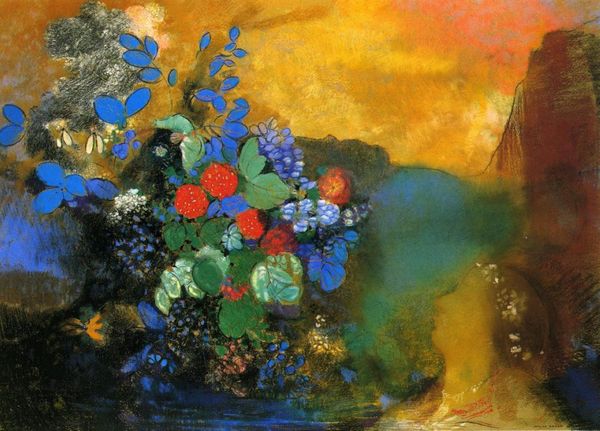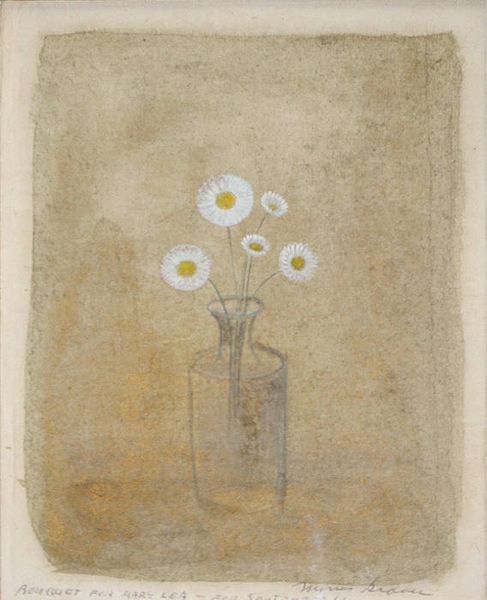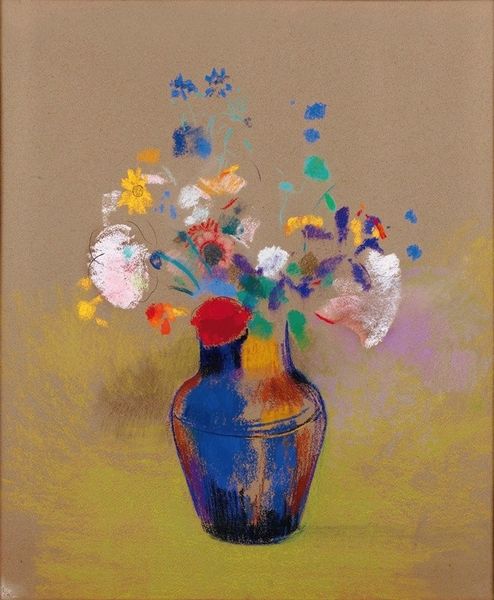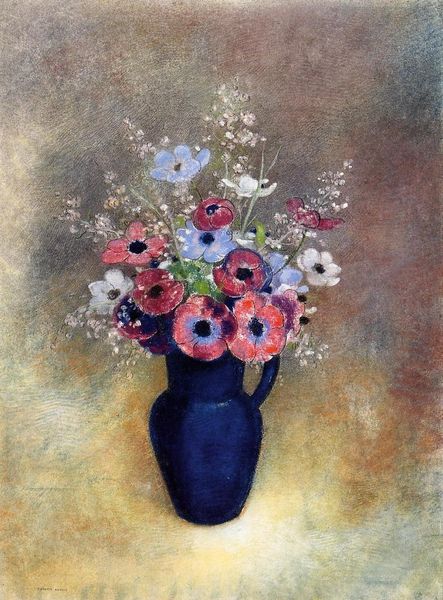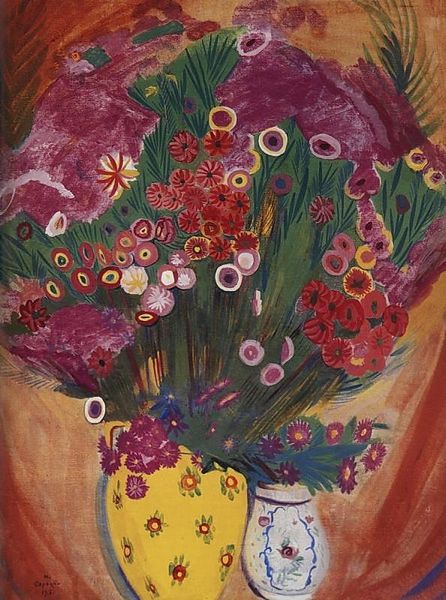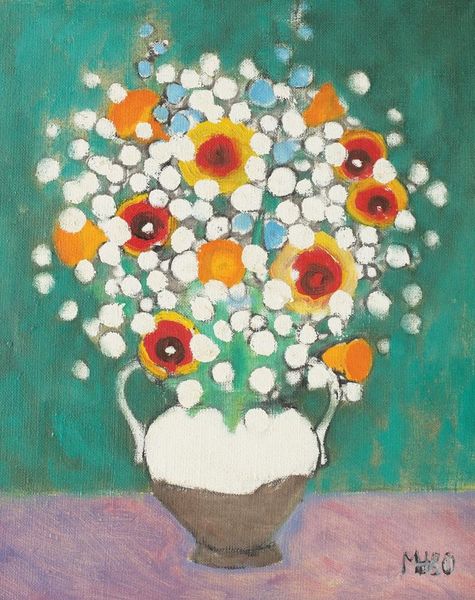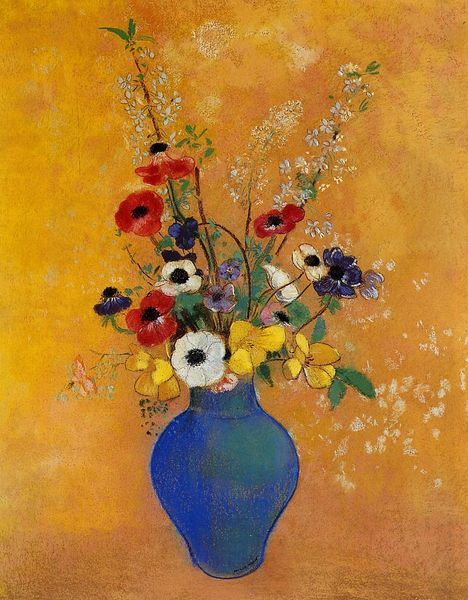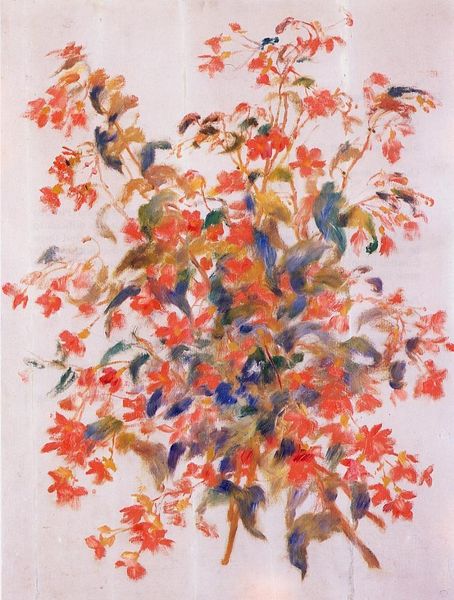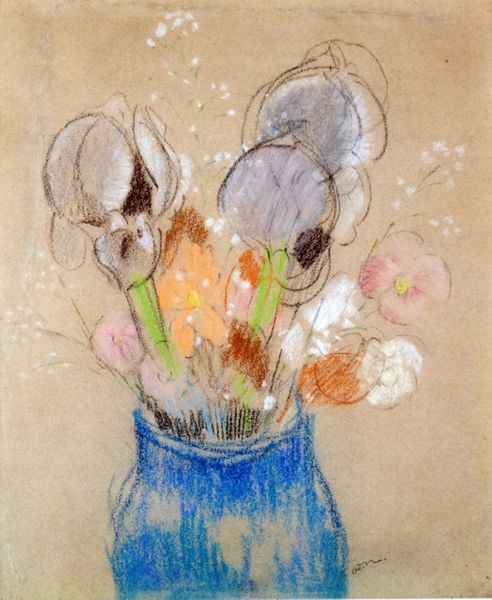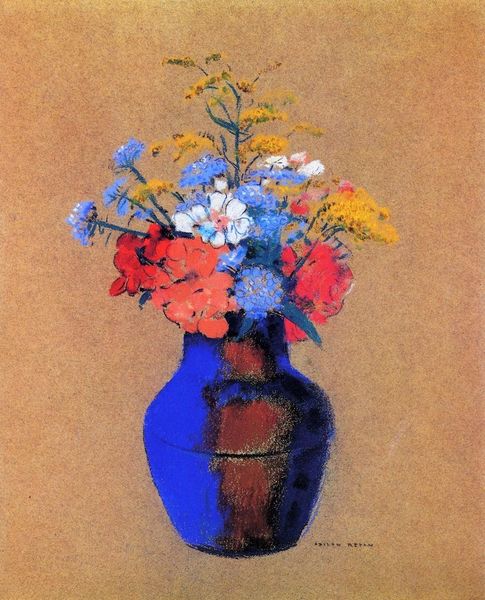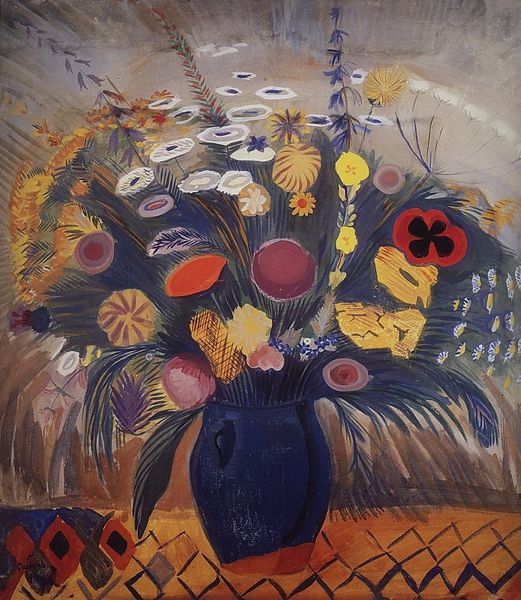
Dimensions: 53 x 72 cm
Copyright: Public domain
Curator: Redon's "Three Vases of Flowers," created around 1909, draws us into an intimate encounter with still life through gouache and pastel on paper. Editor: My immediate impression is a sort of dreamy dissonance. The composition feels simultaneously grounded and ethereal. There's a visual push and pull happening, the color palette seems subdued but expressive. Curator: That’s a fitting reaction. Redon’s pieces, especially those from his later period, explored the boundaries between dreams and reality. Notice how the bouquets, while rendered representationally, seem to float ethereally against the background, imbuing a rather melancholic, romantic air. Editor: The brushstrokes definitely contribute to that effect, don’t they? See how he layers the pastel and gouache. Each short, deliberate stroke almost vibrates visually, and despite what appears to be simple subject matter, I get the sense it's really quite complex in both composition and technique. Curator: Indeed. And look at how he plays with symbolism. Flowers themselves are transient symbols of beauty, youth, and fleeting life, which perfectly echoes the artist's constant probing into subconscious and emotional states. Editor: Do you think that’s why the colours feel almost… bruised in certain sections? Those dusky blues, reds, and yellows feel deliberately chosen to evoke an emotional response. Not celebratory, but definitely compelling. The colours have such a visual presence. Curator: Absolutely. This particular artwork showcases his turn to vibrant colors and intricate floral arrangements. His intent was to conjure the unseen, perhaps using flowers as portals into different mental spaces and subconscious experience. They're vessels for ideas, for inner landscapes. Editor: So, the work is really inviting us to consider art as more than just decoration but as a mirror reflecting interior states and hidden connections. It shows the power a collection of colours, texture and arrangement can evoke. Curator: Precisely! It gives tangible form to feelings and hidden meaning. Redon invites us to search inside ourselves, just as he searches for the sublime. Editor: Yes, I come away with a deep impression of the visual depth, considering what initially seemed a somewhat basic scene.
Comments
No comments
Be the first to comment and join the conversation on the ultimate creative platform.
